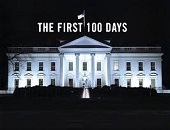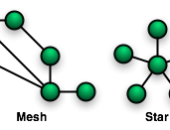Volatility Clustering
When looking at stock market time series, one notices immediately a certain “jitter” or “noise” in the daily returns. This is ordinary volatility. Every once in a while, volatility becomes higher and stays that way—for a while. “Volatility clustering occurs when the volatility of the returns becomes correlated from one day to another,” said Attilio Meucci, CEO and founder of Advanced Risk and Portfolio Management (ARPM). He was the sole presenter at the May 11, 2017, webinar on Modeling and Forecasting Volatility Clustering sponsored by the Global Association of Risk Professionals. Meucci began by showing an example of volatility clustering […]
A Moving Target
When it comes to changing the Dodd-Frank Act (DFA), the new Trump administration “may find repeal and replace is not really a good strategy,” said Tim McTaggart, partner at Stinson Leonard Street, LLP. He was the second of two presenters during the webinar on planned changes to the Dodd-Frank Act, April 27, 2017, timed to coincide with the 100th day since Donald Trump became U.S. president. The webinar was sponsored by the Global Association of Risk Professionals. The changes could involve a reconfiguration or readjustment of the regulatory process, coupled with “some really interesting personnel appointments,” McTaggart said. It’s a […]
The First 100 Days
In the first 100 days of the Trump presidency, has financial risk increased, decreased, or stayed the same? “One of the key platforms of the Trump administration was a promise to dismantle the Dodd-Frank Act,” said Candice Nonas, managing consultant at Resources Global Professionals. “What will be the impact of repeal on consumer protection?” She was one of two presenters during the one-hour webinar sponsored by the Global Association of Risk Professionals on April 27, 2017, which is the 100th day since Donald Trump became U.S. president. Nonas noted that the Dodd-Frank Act is actually an amalgam of several pieces […]
Weatherproofing Bonds
When it comes to managing climate risk, what is the wise investor to do? Low-carbon investing is one possibility. We recently interviewed Marielle de Jong, head of fixed -income quant research at Amundi Asset Management. She said, “The purpose of low-carbon investing is not to penalize companies that produce a lot of CO2. The question is whether the production line is carbon efficient, whether there is no unnecessary spoilage. That is why the selection criterion is the intensity, the tonnage of CO2 per added value, and not the tonnage itself.” She cautioned, “It is a complex task to measure CO2 […]
Weatherproofing Equities
Risks in finance are many and varied. How can a forward-looking researcher choose which areas need the most attention? We recently interviewed Patrick Bolton, professor of business at Columbia University and asked what led to his interest in hedging climate risk. “I am interested in long-term investing, especially how large long-term institutional investors should think about the risk-return trade-offs they face,” he said. “Long-term investors have to think harder about risks that do not yet appear material to short-term investors. One category of such risks is what is now commonly referred to as environmental, social and governance factors, or in […]
“A Series of Deals, Lost 18 Times”
“This book is about a black swan event that turned out to be the largest restructuring in Canadian history,” the moderator Marlene Puffer said as she welcomed dozens of people to a breakfast book launch, held at the Rotman School of Management, University of Toronto on November 9, 2016. In financial markets, the year 2007-8 was a precarious time—“things could have gone either way,” she noted. Ultimately, there was a happy ending: the value of billions of dollars of asset-backed commercial paper (ABCP) in Canada was preserved and most investors were made whole. “This is the book that tells the […]
Central Clearing Design
If you had to design a central clearinghouse for transactions in financial markets, what size of guarantees should be offered? And what percentage fees should be charged? “The central clearing modifies the market,” said Andreea Minca, “because the old network structure [of one-to-one] is changing to a new ‘star’ structure.” Minca is Assistant Professor at the School of Operations Research and Information Engineering at Cornell University and was the sole presenter at the December 6, 2016, webinar on systemic risk and central clearing design to members of the Global Association of Risk Professionals (GARP). Under new US legislation, all over-the-counter […]
Clash of Titans
In the wake of the financial crisis, the two Titans that create accounting standards tried to hammer out agreement over how to account for impairment of loans. These bodies are the Financial Accounting Standards Board (FASB) and the International Accounting Standards Board (IASB). “FASB and IASB share the same goal but unfortunately were not able to agree on the same standard,” said Emil Lopez, Director of Risk Measurement at Moody’s Analytics. FASB calls their impairment standard “current expected credit losses” (CECL) whereas IASB deals with impairment and expected losses in their International Financial Reporting Standards as IFRS 9. Lopez was […]
Move Beyond Spreadsheets
Is your firm ready? Financial institutions are seeking answers that will help them plan a roadmap for implementation of the new current expected credit losses (CECL) standard issued by the Financial Accounting Standards Board (FASB). “The runway looks long but firms need to start to prepare now,” said Anna Krayn, Team Lead for Impairment, Capital Planning and Stress Testing at Moody’s Analytics. She was the second of three panellists at the webinar “The Long Road to CECL” sponsored by the Global Association of Risk Professionals on September 8, 2016. “Now is the time to educate, organize and govern, quantify, and […]
Long Road, Many Challenges
Nothing like a financial crisis to show the rough spots in estimation of losses. “Credit losses weren’t being recognized on a timely basis,” and the impairment accounting models were complex and varied widely, according to Kevin Guckian, Partner, National Professional Practice at Ernst &Young. He was the first of three panellists at the webinar “The Long Road to CECL” sponsored by the Global Association of Risk Professionals on September 8, 2016. “FASB’s final standard should accelerate recognition of credit losses,” Guckian noted, referring to the current expected credit losses (CECL) standard newly adopted by the Financial Accounting Standards Board. He […]










